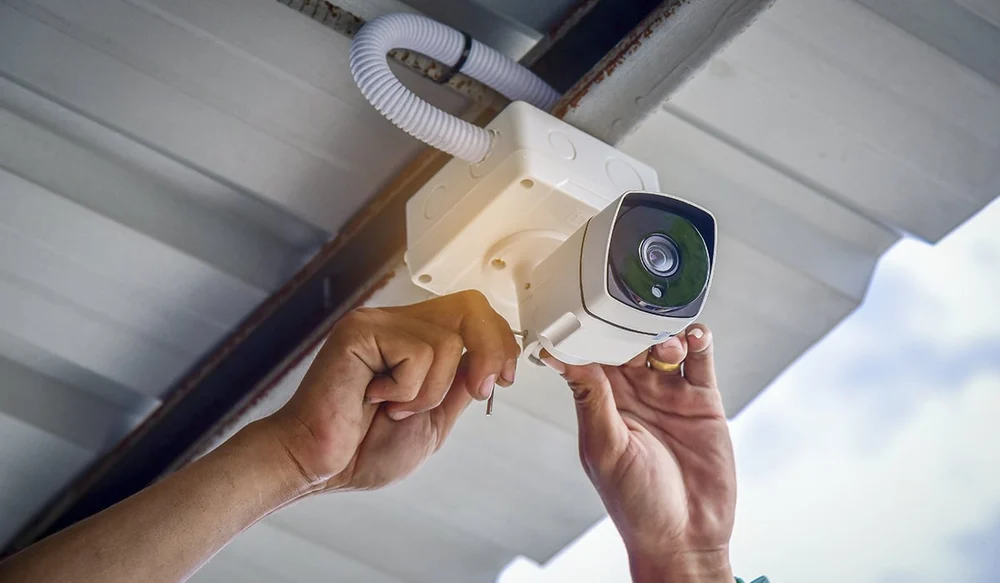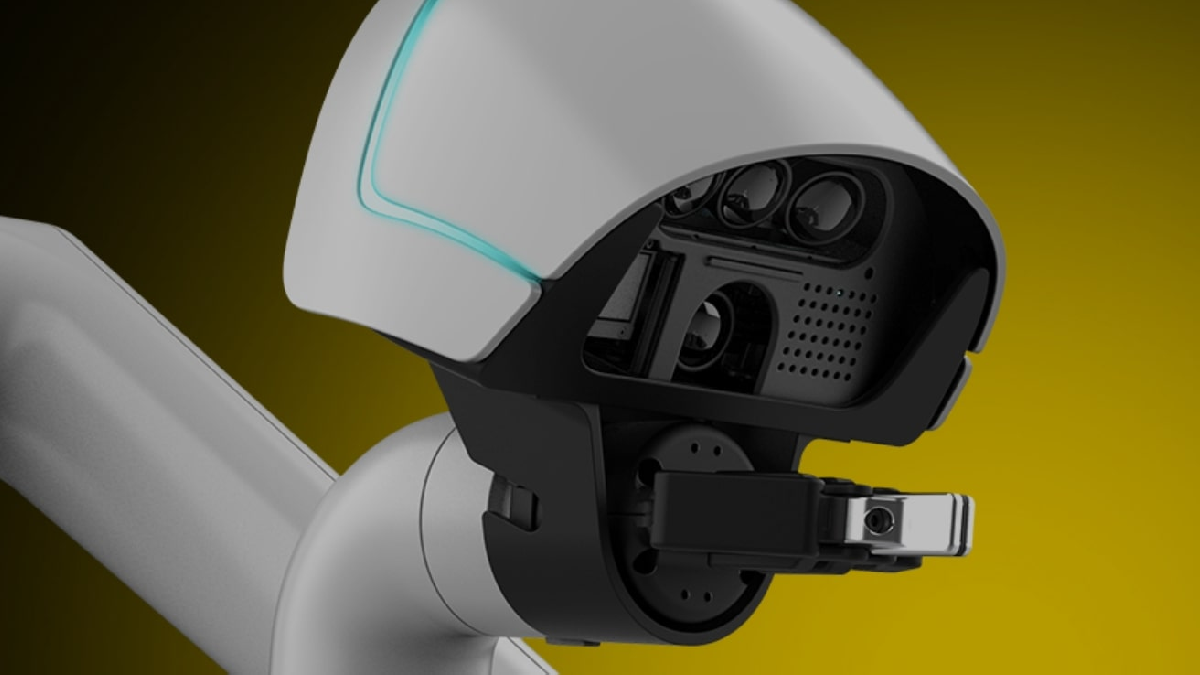In today’s world, home security is a top priority — and with increasing environmental awareness, outdoor solar cameras are becoming a game-changer. These innovative devices offer reliable surveillance powered by clean, renewable solar energy, reducing your carbon footprint while keeping your property safe.
If you’re considering upgrading your home security system or installing your first outdoor camera, this comprehensive guide will cover everything you need to know about outdoor solar cameras. From how they work and key features to installation tips and top models, you’ll learn why these eco-friendly security cameras are an excellent investment for any homeowner.
What Is an Outdoor Solar Camera?
An outdoor solar camera is a wireless security camera powered primarily or entirely by solar energy. Unlike traditional cameras that depend on wired electricity or frequent battery replacements, solar cameras use photovoltaic panels to capture sunlight and convert it into electricity.
This solar power keeps the camera running continuously without the hassle of cables, making them ideal for outdoor use where wiring may be impractical or expensive.
How Outdoor Solar Cameras Work
Outdoor solar cameras typically combine a high-efficiency solar panel with a rechargeable battery and camera hardware. During the day, the solar panel collects sunlight, charges the internal battery, and stores energy. When it’s dark, the camera draws power from the battery to record footage, send alerts, and operate night vision features.
This self-sustaining power cycle makes outdoor solar cameras highly convenient and eco-friendly.
Benefits of Using an Outdoor Solar Camera
Installing an outdoor solar camera offers several key advantages that make it a preferred choice over conventional security systems.
1. Eco-Friendly and Energy Efficient
The most obvious benefit is using clean, renewable solar power. Outdoor solar cameras reduce electricity consumption and lower your home’s carbon footprint, supporting greener living.
2. Wireless and Easy to Install
Since outdoor solar cameras don’t require electrical wiring, installation is simple and flexible. You can place them anywhere with adequate sunlight—like your garden, driveway, or backyard—without worrying about nearby power outlets.
3. Cost Savings Over Time
While solar cameras may have a higher upfront cost, they eliminate ongoing electricity bills and reduce maintenance expenses, like battery replacements, making them cost-effective in the long run.
4. Continuous Surveillance Without Power Interruptions
Thanks to solar charging combined with backup batteries, outdoor solar cameras can operate continuously—even during power outages or bad weather (depending on the model).
5. Increased Property Protection
Many outdoor solar cameras come with advanced features such as motion detection, night vision, two-way audio, and cloud storage, enhancing your home’s security and giving you peace of mind.
Key Features to Look for in an Outdoor Solar Camera
When shopping for an outdoor solar camera, keep these important features in mind to ensure you get a product that meets your needs.
Solar Panel Quality and Battery Capacity
High-efficiency solar panels and large-capacity rechargeable batteries ensure your camera stays powered day and night. Look for cameras with at least a 5-watt solar panel and batteries that can last multiple cloudy days.
Video Resolution
Choose a camera with at least 1080p HD video resolution for clear, detailed footage. Higher resolutions like 2K or 4K provide even better clarity but may consume more power.
Motion Detection and Alerts
Smart motion sensors trigger recording and instant alerts to your smartphone, so you never miss suspicious activity.
Night Vision
Infrared or color night vision allows your camera to record clearly in low-light conditions, ensuring 24/7 surveillance.
Weather Resistance
Outdoor solar cameras should be rated for outdoor use, typically with an IP65 or higher waterproof and dustproof certification, so they withstand rain, dust, and temperature extremes.
Connectivity
Reliable Wi-Fi connectivity is crucial for streaming live footage and receiving alerts. Some cameras also support cellular data or local storage as backup options.
Storage Options
Many models offer cloud storage subscriptions, microSD cards, or both, allowing you to save and review recorded videos securely.
How to Install an Outdoor Solar Camera: Step-by-Step Guide
Installing an outdoor solar camera can be a straightforward DIY project. Follow these steps to get your system up and running efficiently.
Step 1: Choose the Optimal Location
Find a spot with plenty of direct sunlight throughout the day to maximize solar panel charging. Avoid shaded areas under trees or roofs.
Step 2: Mount the Solar Panel and Camera
Use the included brackets to secure the solar panel and camera on walls, fences, or poles. Angle the solar panel toward the sun, ideally facing south if you’re in the northern hemisphere.
Step 3: Connect and Pair the Camera
Link your camera to the solar panel if separate. Then, use the manufacturer’s app to connect the camera to your home Wi-Fi network and configure settings.
Step 4: Test Camera Functions
Check video quality, motion detection sensitivity, night vision, and alert notifications. Adjust settings for optimal performance.
Step 5: Monitor and Maintain
Regularly clean the solar panel to remove dust or debris, and check the battery health through the app. Replace batteries as recommended.
Top Outdoor Solar Cameras on the Market in 2025
Here’s a quick comparison of some leading outdoor solar cameras that combine efficiency, durability, and smart features:
| Model | Solar Panel Wattage | Video Resolution | Battery Life | Special Features | Price Range |
| Arlo Pro 4 Solar | 5W | 2K HD | Up to 6 months | Color night vision, 2-way audio | $350 – $400 |
| Ring Solar Floodlight | 6W | 1080p HD | 6 months | Floodlight, motion-activated siren | $250 – $300 |
| Reolink Argus PT | 5W | 1080p HD | 4-6 months | Pan & tilt, two-way audio | $220 – $280 |
| Soliom S90 Pro | 6W | 1080p HD | 4-5 months | AI motion detection, siren | $200 – $250 |
Outdoor Solar Camera Maintenance Tips
To keep your outdoor solar camera functioning at its best, follow these maintenance tips:
- Clean the solar panel regularly with a soft cloth to ensure maximum sunlight absorption.
- Trim nearby branches or foliage that may cast shadows on the solar panel.
- Check the camera’s firmware and app updates to benefit from new features and security patches.
- Inspect the camera housing for cracks or damage and repair promptly to maintain weather resistance.
- Recharge or replace the battery if you notice a significant drop in performance.
Common Myths About Outdoor Solar Cameras
Despite growing popularity, some misconceptions about outdoor solar cameras persist. Let’s clarify a few:
Myth 1: Solar Cameras Don’t Work in Cloudy or Rainy Weather
While sunlight is essential, modern solar panels and batteries can store enough power to keep cameras running through cloudy days or rainstorms.
Myth 2: Solar Cameras Are Only for Remote Areas
Solar-powered cameras work perfectly well in urban and suburban homes, especially where running wiring is inconvenient or expensive.
Myth 3: Solar Cameras Have Poor Video Quality
Many outdoor solar cameras offer high-definition video and smart features comparable to traditional wired cameras.
Is an Outdoor Solar Camera Right for Your Home?
If you want a security solution that’s green, flexible, and hassle-free, an outdoor solar camera is an excellent choice. It fits especially well if you:
- Live in areas with good sunlight exposure.
- Need a wireless security option.
- Want to reduce electricity bills and environmental impact.
- Desire easy installation without professional help.
Solar-powered surveillance is shaping the future of home security, combining sustainability with advanced technology.
Conclusion
Outdoor solar cameras represent a smart, sustainable way to protect your home while reducing your carbon footprint. They deliver impressive performance, flexible placement, and ongoing savings without compromising on security features.
By choosing a high-quality solar camera, installing it in the right location, and maintaining it properly, you’ll enjoy reliable, eco-friendly surveillance that works day and night, rain or shine.
Ready to make the switch? Explore the best outdoor solar cameras on the market and experience peace of mind powered by the sun.





